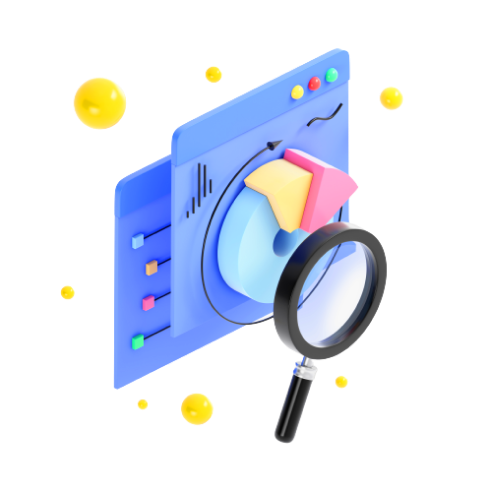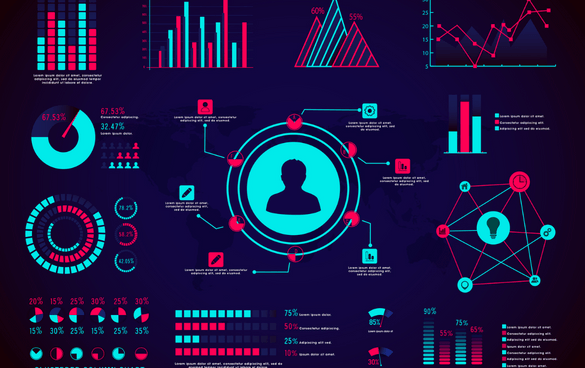-
 Published: Mar 26, 2023
Published: Mar 26, 2023
-
 6 min. read
6 min. read
-
 Matthew Gibbons
Matthew Gibbons Lead Data & Tech Writer
Lead Data & Tech Writer
- Matthew is a marketing expert focusing on the SEO & martech spaces. He has written over 500 marketing guides and video scripts for the WebFX YouTube channel. When he’s not striving to put out some fresh blog posts and articles, he’s usually fueling his Tolkien obsession or working on miscellaneous creative projects.
Have you heard of “data-driven marketing” before? If so, you might have learned the importance of using data to inform your marketing efforts. By gathering data about your customers, industry, and past marketing results, you can better improve your marketing efforts going forward.
Your marketing data can come from various sources, and there are multiple ways to gather it. There are also multiple ways to use that data once you have it. It’s a lot to keep up with, which is why you need a data strategy on your side.
But what is a data strategy, and why do you need one? Keep reading to find out. Then, subscribe to Revenue Weekly — our email newsletter — for more digital marketing tips from the experts!
Join 200,000 smart marketers and get the month’s hottest marketing news and insights delivered straight to your inbox! “*” indicates required fields (Don’t worry, we’ll never share your information!)Don’t miss our Marketing Manager Insider emails!
Enter your email below:
Inline Subscription Form – CTA 72

What is a data strategy?
A data strategy is a business plan for managing the data that your company acquires — how to gather, store, categorize, and use it. Overall, it’s simply a plan for managing your business data.
What are the benefits of using a data analytics strategy?
Having a data strategy in place comes with some obvious benefits. The overall goal of having a data strategy is that it helps you get far more out of your marketing.
Without a plan in place, you’ll find yourself stumbling blindly through the data management process. But when you have a strategy to guide you — how to acquire, store, sort, and analyze data — you can streamline the whole process and get much better results from it in much less time.
Having a strategy in place also makes your data management more consistent. By always following the strategy, you’ll do things the same way each time instead of constantly changing your data management process and receiving inconsistent data quality levels.
These benefits mean the data you gather will be more helpful to your business, allowing you to produce a better customer experience and drive more revenue.
Types of data strategies
There are two primary types of data strategies you can use — data defense and data offense. Here’s an overview of each one.
Data defense
Data defense is a data analytics strategy that prioritizes consistency and centralization for your data. With a defense strategy, you try to identify one primary source for each type of data.
For example, if you’re tracking customer satisfaction, you might decide that your net promoter score (NPS) is the primary source of data in that area. Rather than trying to reconcile multiple sources of information on customer satisfaction, you simply go with what your NPS indicates.
This type of data strategy limits the range of data you analyze and makes it easier to manage. It eliminates the need to reconcile a ton of different sources for each type of data.
Data offense
A data offense strategy prioritizes flexibility and variety. Where a defense strategy identifies a single source of truth for each type of data, an offense strategy will account for all available data sources. When those sources disagree, an offense strategy will try to find a middle ground between them.
This strategy takes more time and effort, and it comes with the risk of skewing your data if you happen to have a faulty data source anywhere. However, it also allows you to get a broader perspective on your data that can help you learn things you might not learn with a defense strategy.
Something to be aware of is that there’s not a clear-cut distinction between defense and offense strategies. The two exist on a spectrum, and it’s up to you to figure out where on that spectrum your strategy will fall, as well as which of the two sides it will skew closer toward.
What should a good data strategy include?
Now that we’ve covered the basics of data strategies, let’s talk about what your data strategy should include. It’s hard to get into specifics since every strategy looks different, but here are three broad types of info your strategy should help you plan for.
1. Who manages your data
The first thing your data strategy should include is who on your team will handle data and what their role will be. Who’s responsible for:
- Gathering data?
- Sorting it?
- Reviewing it?
- Analyzing it?
You can also ask yourself questions like:
- How will your different teams interact with your data and each other?
- Which teams will be responsible for which types of data?
- Which other teams will they share that data with?
Answering those questions will help you streamline your data process, eliminating any confusion about who has which responsibilities and what’s expected of everyone when it comes to data management.
2. Tools for managing your data
Another vital element of any data strategy is tools and technology. You probably don’t want to handle all your data with your bare hands, from data extraction to data transformation — you’ll want help from some digital data tools or your data stack. Of course, the question is, which tools will you use? That’s something your data analytics strategy should answer.
For example, you may want to use a customer relationship management (CRM) platform to gather and store your customer data. Or maybe you plan to bypass a CRM and simply use an enterprise resource platform (ERP) for all data across your whole company.
Whatever tools you plan to use for data collection, categorization, and analysis, your strategy should include that information.
3. How you use your data
Finally, your data strategy should cover how you intend to use your data. What will your process be for analyzing it? How will you analyze different types of data? What insights will you be looking for in that data?
Answering those questions will help you speed up your data analytics process significantly. Plus, you can also plan for what you’ll do with the insights you gain. How will you use the information you learn from your analytics?
Are you interested in custom reporting that is specific to your unique business needs? Powered by MarketingCloudFX, WebFX creates custom reports based on the metrics that matter most to your company.Measuring the metrics that affect your bottom line.
Learn More 

WebFX can help you get the most from your marketing data strategy
Want some help managing your marketing data? WebFX can help. Our proprietary marketing software, MarketingCloudFX (MCFX), can help you gather and analyze valuable data about your marketing campaigns — campaigns we can help you optimize for better results.
Plus, if you want someplace to store and analyze your customer data, check out Nutshell, our top-of-the-line CRM. Nutshell can help you gain valuable insights about your customers, even automating a good chunk of the process so your team is freed up to do other things.
To get started with us, just call 888-601-5359 or contact us online today!
-
 Matthew is a marketing expert focusing on the SEO & martech spaces. He has written over 500 marketing guides and video scripts for the WebFX YouTube channel. When he’s not striving to put out some fresh blog posts and articles, he’s usually fueling his Tolkien obsession or working on miscellaneous creative projects.
Matthew is a marketing expert focusing on the SEO & martech spaces. He has written over 500 marketing guides and video scripts for the WebFX YouTube channel. When he’s not striving to put out some fresh blog posts and articles, he’s usually fueling his Tolkien obsession or working on miscellaneous creative projects. -

WebFX is a full-service marketing agency with 1,100+ client reviews and a 4.9-star rating on Clutch! Find out how our expert team and revenue-accelerating tech can drive results for you! Learn more
Try our free Marketing Calculator
Craft a tailored online marketing strategy! Utilize our free Internet marketing calculator for a custom plan based on your location, reach, timeframe, and budget.
Plan Your Marketing Budget

Maximize Your Marketing ROI
Claim your free eBook packed with proven strategies to boost your marketing efforts.
Get the GuideTry our free Marketing Calculator
Craft a tailored online marketing strategy! Utilize our free Internet marketing calculator for a custom plan based on your location, reach, timeframe, and budget.
Plan Your Marketing Budget





